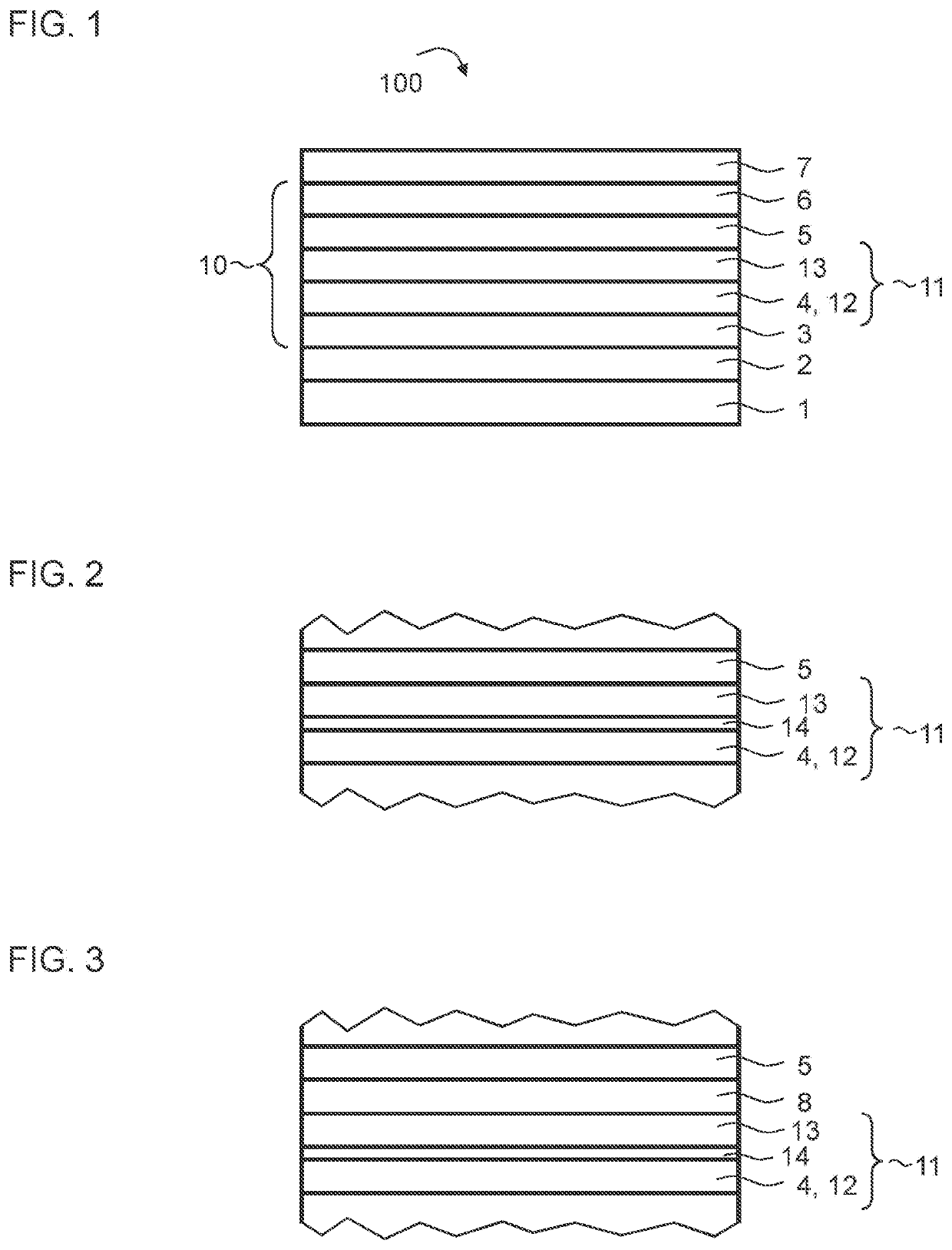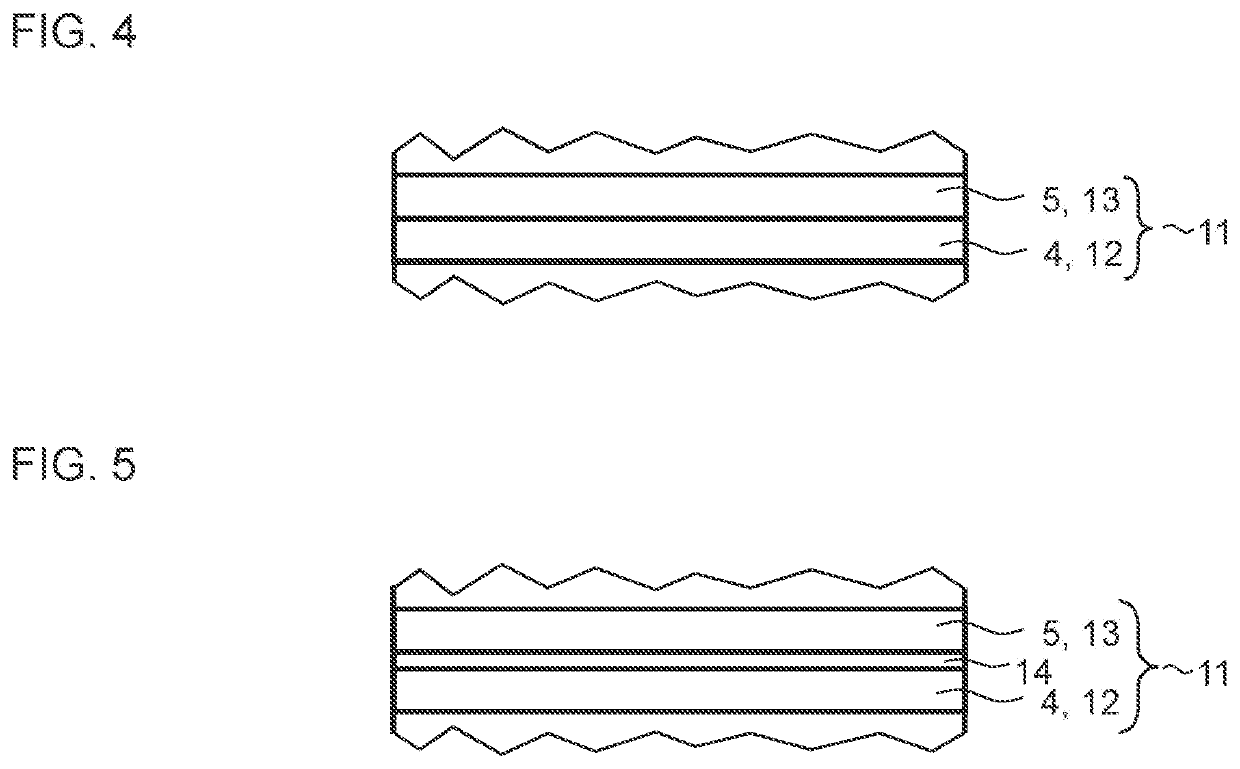Organic light-emitting component having a light-emitting layer as part of a charge generation layer
a light-emitting component and charge generation layer technology, applied in the direction of solid-state devices, chemistry apparatus and processes, and light-emitting compositions, can solve the problems of limiting the stability of oleds, reducing the efficiency of oleds, so as to reduce the cycle time, improve the efficiency, and improve the effect of light-emitting
- Summary
- Abstract
- Description
- Claims
- Application Information
AI Technical Summary
Benefits of technology
Problems solved by technology
Method used
Image
Examples
Embodiment Construction
[0035]FIG. 1 shows an exemplary embodiment of an organic light-emitting component 100, which comprises an organic functional layer stack 10 having at least two organic light-emitting layers 4, 5 between two electrodes 2, 7.
[0036]In the exemplary embodiment shown, the electrodes 2, 7 and the organic functional layer stack 10 are arranged on a substrate 1. The substrate 1 can act as a carrier element for the layers applied thereon and comprise or be formed from, e.g., glass, for instance in the form of a glass film or glass sheet, quartz and / or a semiconductor material. Alternatively, the substrate 1 can also comprise or be formed from a plastic film or a laminate of multiple plastic films and / or glass films.
[0037]At least one of the two electrodes 2, 7 is transparent in form, wherein at least in the event that the organic light-emitting component 100 is in the form of a bottom emitter, in which the lower electrode 2 arranged between the substrate 1 and the organic functional layer st...
PUM
| Property | Measurement | Unit |
|---|---|---|
| thickness | aaaaa | aaaaa |
| thickness | aaaaa | aaaaa |
| thickness | aaaaa | aaaaa |
Abstract
Description
Claims
Application Information
 Login to View More
Login to View More - R&D
- Intellectual Property
- Life Sciences
- Materials
- Tech Scout
- Unparalleled Data Quality
- Higher Quality Content
- 60% Fewer Hallucinations
Browse by: Latest US Patents, China's latest patents, Technical Efficacy Thesaurus, Application Domain, Technology Topic, Popular Technical Reports.
© 2025 PatSnap. All rights reserved.Legal|Privacy policy|Modern Slavery Act Transparency Statement|Sitemap|About US| Contact US: help@patsnap.com


